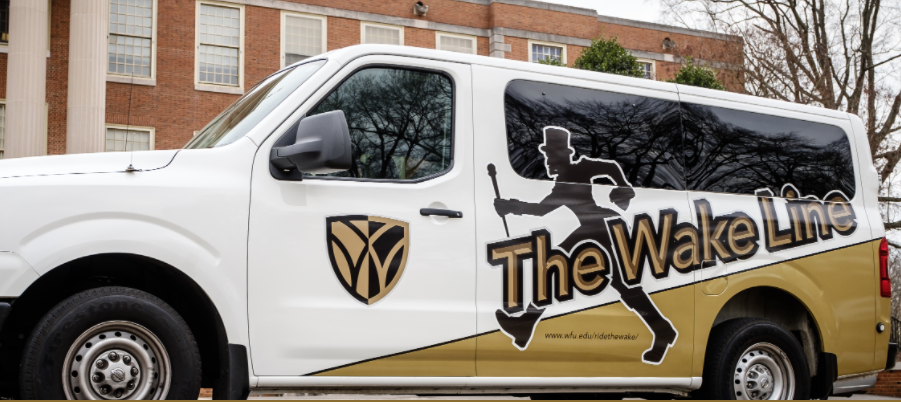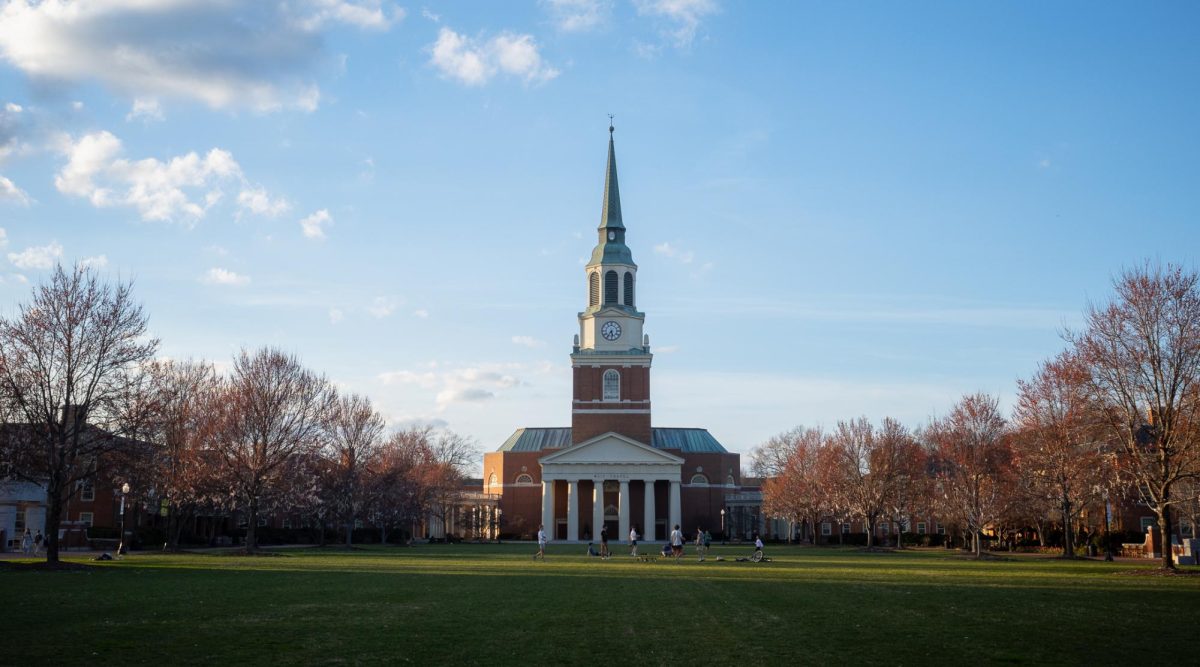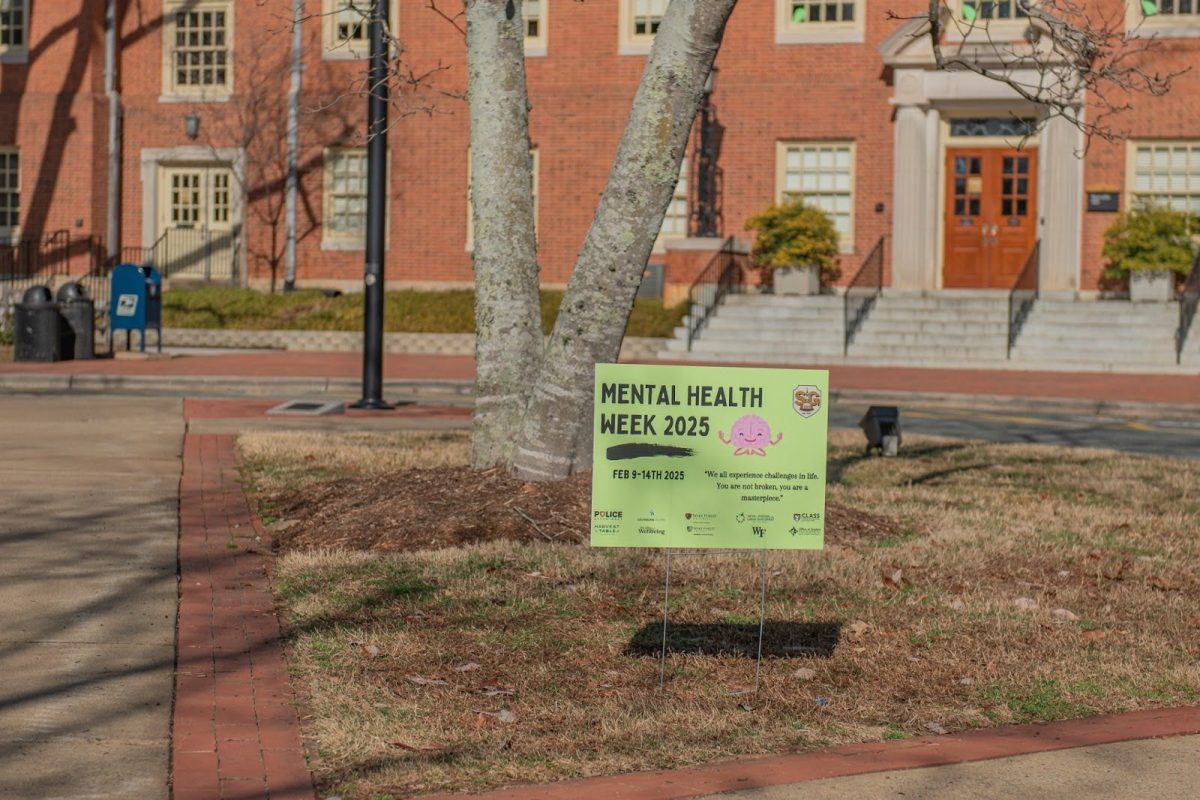Make a slight right onto University Parkway. Your estimated arrival time is in 12 minutes. Left onto Eighth Street. Right onto Patterson Avenue. Left onto Fourth Street. Left onto Vine Street. You have arrived at your destination.
Starting at 7:25 a.m. until 11:10 p.m. on weekdays, shuttles run about every 15 minutes between the Benson University Center and Wake Downtown. In the morning, there are four buses on this route, and, in the afternoon, there are three.
As the university increases its presence downtown, more students and staff will need the means to get there. Currently there are 11 shuttles in the university’s fleet — 10 of which are running at any given time during the day on various routes — and they are fueled by regular, unleaded gas. The balancing act between needing to transport large amounts of students and wanting to have a sustainable transportation system has proven difficult.
“We want the university to grow, but we have to understand that when the university grows, other services grow as well,” said Transportation Manager Arian Bryant.
Transportation accounted for 27 percent of the U.S. greenhouse gas emissions in 2015, according to the Environmental Protection Agency. Most of these emissions are carbon dioxide (CO2), resulting from the burning of petroleum-based products, such as the gasoline used in the engines of cars and trucks.
Most gasoline in the U.S. is E10, which contains 10 percent fuel ethanol by volume. The burning of one gallon of E10 produces about 18.9 pounds of carbon dioxide, according to the U.S. Energy Information Administration. Accumulation of CO2 in the atmosphere contributes to an increase of the earth’s greenhouse effects, leading to a warming planet and a host of other environmental problems such as erratic weather and sea-level rise.
In an effort to reduce greenhouse gas emissions, particularly carbon dioxide, many people and transit agencies have transitioned to hybrid-electric or electric vehicles.
Wake Forest’s own home city has even made the transition. In 2009, the Winston-Salem Transit Authority Board decided to only purchase hybrid-electrics, which use battery power for low speeds and fuel for high speed. Now, these large green buses drive throughout the city, telling residents to “Breathe easy … I’m hybrid-electric” in big, white letters.
While it would have positive effects for the environment, converting the university’s shuttle system to hybrid buses might not be feasible.
The ride to get off campus is not a smooth one — even with a smooth R&B song playing on the shuttle’s sound system — due to the university’s infrastructure. Wake Forest’s roads are riddled with speed bumps, which complicates the possibility of hybrid buses. Hybrid buses are often what Bryant described as “low boys,” meaning they are low to the ground and would not be able to get over the speed bumps.
Bigger issues also lie within costs and other infrastructure.
“Say we buy all electric shuttles next year, one thing you have to factor in is the cost of the shuttle, the cost to fix the shuttle, and the cost to charge the buses,” Bryant said. “Now you’re talking about infrastructure.”
On the outside, the use of gas-burning shuttles may not seem to be efficient. During a driver’s shift, their shuttle’s engine is almost always running.
“We keep [the engine] running because we’re sitting here in this seat,” said Shanyce Frith, a shuttle driver. “Our run is every 15 minutes. There’s no need to be cutting it off — not unless we get off the bus [to run to the bathroom]. Then we cut it off.”
Even though these shuttles are always running, they are actually fuel-efficient. According to Frith and Bryant, the shuttles usually only fill up once per shift or in the evening.
“We work it out during the day where we know we’re going to have our lower ridership numbers. We’ll let buses drop off so we’re not burning fuel and we’re not running empty,” Bryant said. “That’s one way we try to limit our greenhouse gas emissions.”
According to Bryant, the shuttles contain 50-gallon tanks and have an average mileage of 15 miles per gallon. One tank can last about 750 miles.
A shuttle will complete the 8.6-mile roundtrip about every 30 minutes, depending on ridership numbers. In a regular eight-hour shift, that’s 137.6 miles total, only burning roughly one-fifth of a tank.
“Emissions from the university’s fleet are a small portion of the carbon inventory,” said Chief Sustainability Officer Dedee Johnston.
Freshman Allyson Deak rides the shuttle to Wake Downtown an average of four times per week and recognizes the benefit of carpooling.
“[The shuttle system] consolidates all the pollution going out into one vehicle rather than hundreds,” Deak said.
















